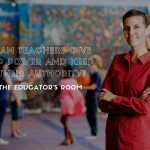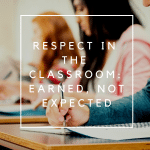The night before the first day of school I can’t sleep. I have my outfit decided and sitting out. I have my room arranged and decorated. I have read my student list and written names on lock tags, name tags, mailboxes, and the birthday poster. This class is mine. This will be my seventeenth “first day” as a teacher. It always brings excitement and a bit of nervousness. I love school!
The kids spill off the buses or wave as parents drop them off. There are smiles, hugs for friends, and chatter of summer fun. They cluster together and begin to form our community. This is our first interaction and it is imperative that it goes well. In education this is always a challenge. There has to be a balance as you love them with structure. You only get one shot to make a good first impression.
I always start my day with a little introduction. We go through and use new supplies and then take a tour the building to get up and moving. I always verify everyone knows how to get home. When doing our first week activities I give students the option to draw or write answers to most requests. This gives insight into the students styles. No one is ready to sit and moving about is important.
Coming back from summer requires creativity to keep attention and begin to set up your classroom community. Here is a list of some fun things for the beginning of the year; but they can all be tied to standards and learning. Hey, sneak it in there before they know your intentions!
- Go outside with a magnifying glass and a 18 inch circle of yarn. Put the yarn down and explore. Find what you can. Write about or draw about it.
- Take a walk outside or go sit on the playground. Categorize items you find. You can use categories that fit your curriculum and standards. (living/non-living/dead, noun/adjective/verb, prepositions, colors, sizes, etc.)
- Take a building tour. Categorize items you find around the school (living/non-living/dead, noun/adjective/verb, prepositions, colors, sizes, etc.)
- Go outside with sidewalk chalk to do math facts, math problems, write sentences.
- Take cameras outside and find shapes, fractions, numbers, letters, or anything from the above list.
- Head back outside again and act out prepositions. Take a picture of each student’s idea.
- Interview each other. Have the class report one interesting fact they learned about their partner.
- Watch storyline online with a specific focus for language arts or reading standards.
- Do a scavenger hunt on the playground to find: where you line up, a great place for quiet play, a great place for active play, boundaries, something you can sit on, something you can stand on, something you can (insert preposition).
- Do a scavenger hunt in your classroom to find: where to turn in papers, location of math supplies, location of art supplies, pencil sharpener, mailboxes, lunch menu, etc.
- Get a state map from your tourism department and do a scavenger hunt: town with longest name, shortest name, capital city, place to go with your family, place animals would be found, a river, a highway, be as specific or as general as you want.
- Have students write their names and then trace around them. This is a good way to tie in symmetry with flips, rotations, reflections. You can have students fold their paper in half and trace their name to show reflection. You can center their first letter and show rotation.
- Have students compare themself to another classmate. Similarities? Differences?
- Have students make an advertisement for the best subject in school or the best place to do school work.
- Have students make a bookmark of their favorite book from the summer or from last year.
- Have students make a wanted poster about themself as a friend. What traits do you have that would make others want to be your friend? Include a self-portrait.
- Talk about sparks—what does each student get excited about and love?
The first week of school is about setting a classroom environment, learning to work together as a community, and getting to know each other. Be sure that you are a model and become involved in any of these activities you do. Partner up with a shy student to interview, let the kids take a picture of you demonstrating a preposition, and tell kids what your spark is. This allows a relationship to start immediately. The foundation of your classroom environment will set up the success of your year. Participate, have fun, learn about your students so you will build relationships of trust. This will lead your students to success throughout the year.




